The Set-up
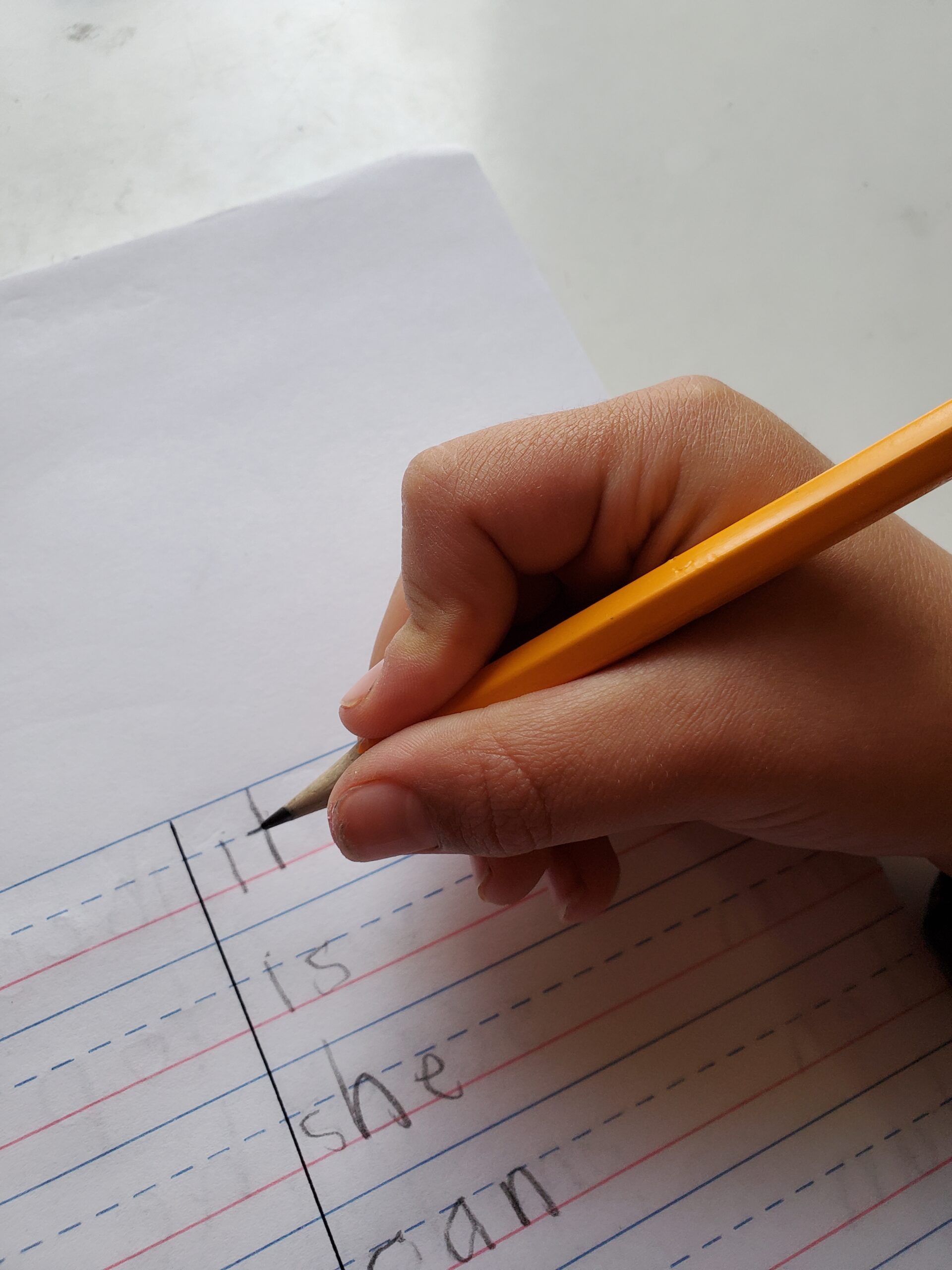

Proper pencil grip should look similar to this. If you can put just your pointer finger up in the air, then your fingers are correct. Hold the pencil where the bare wood and paint meet. The pencil should be resting on the side of your middle finger at the first knuckle.


This grip is too loose. Many young kids will begin with this grip before their finger muscles get stronger. Continue to promote a tighter grip until the finger pad presses more firmly against the pencil.
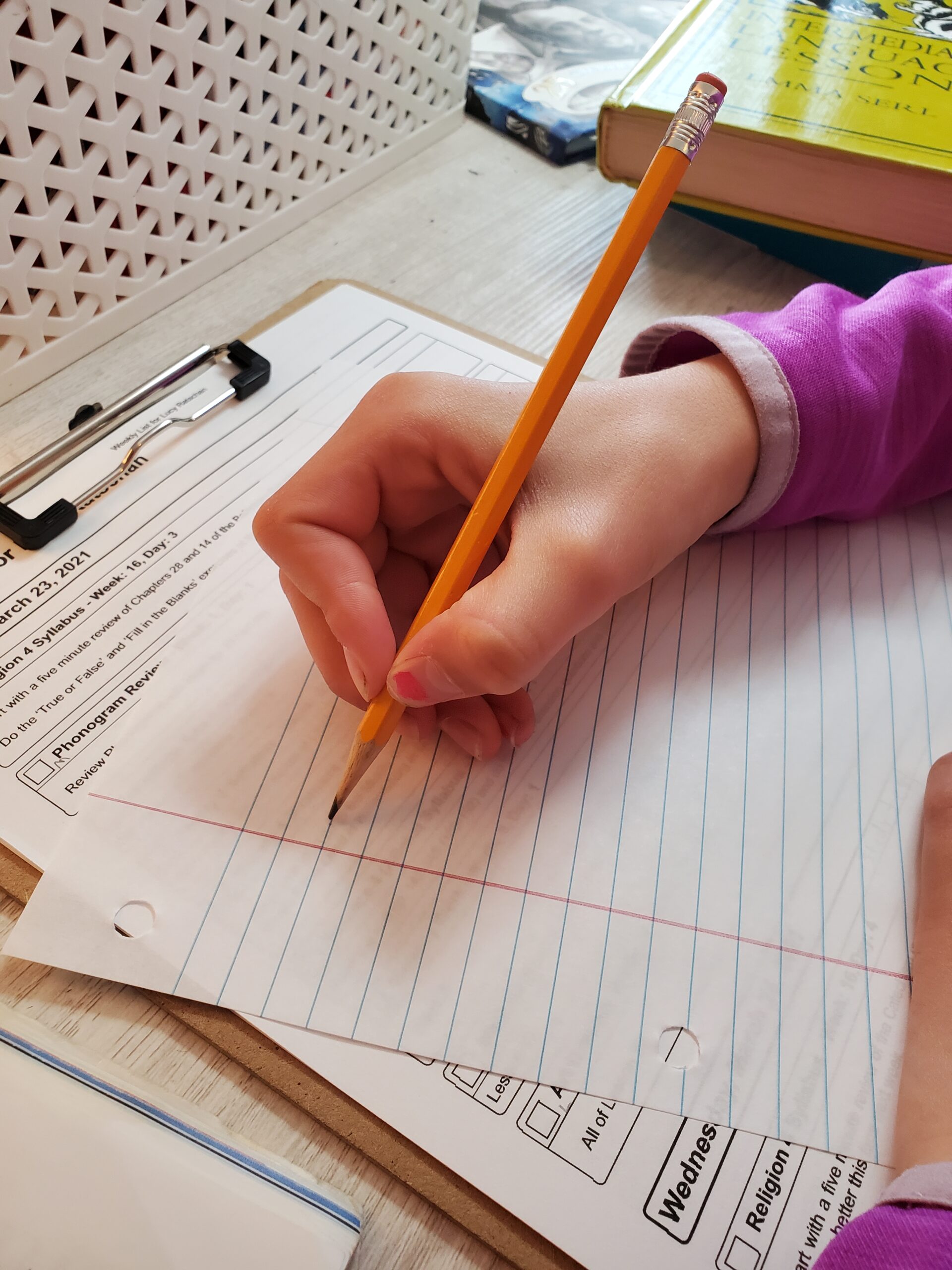

Proper pencil grip should look similar to this. If you can put just your pointer finger up in the air, then your fingers are correct. The pencil should be resting on the side of your middle finger at the first knuckle.


This type of grip creates writing fatigue and “messier” handwriting. The thumb and wrist are doing all the work. Without the middle finger rest point, the pencil isn’t controlled.
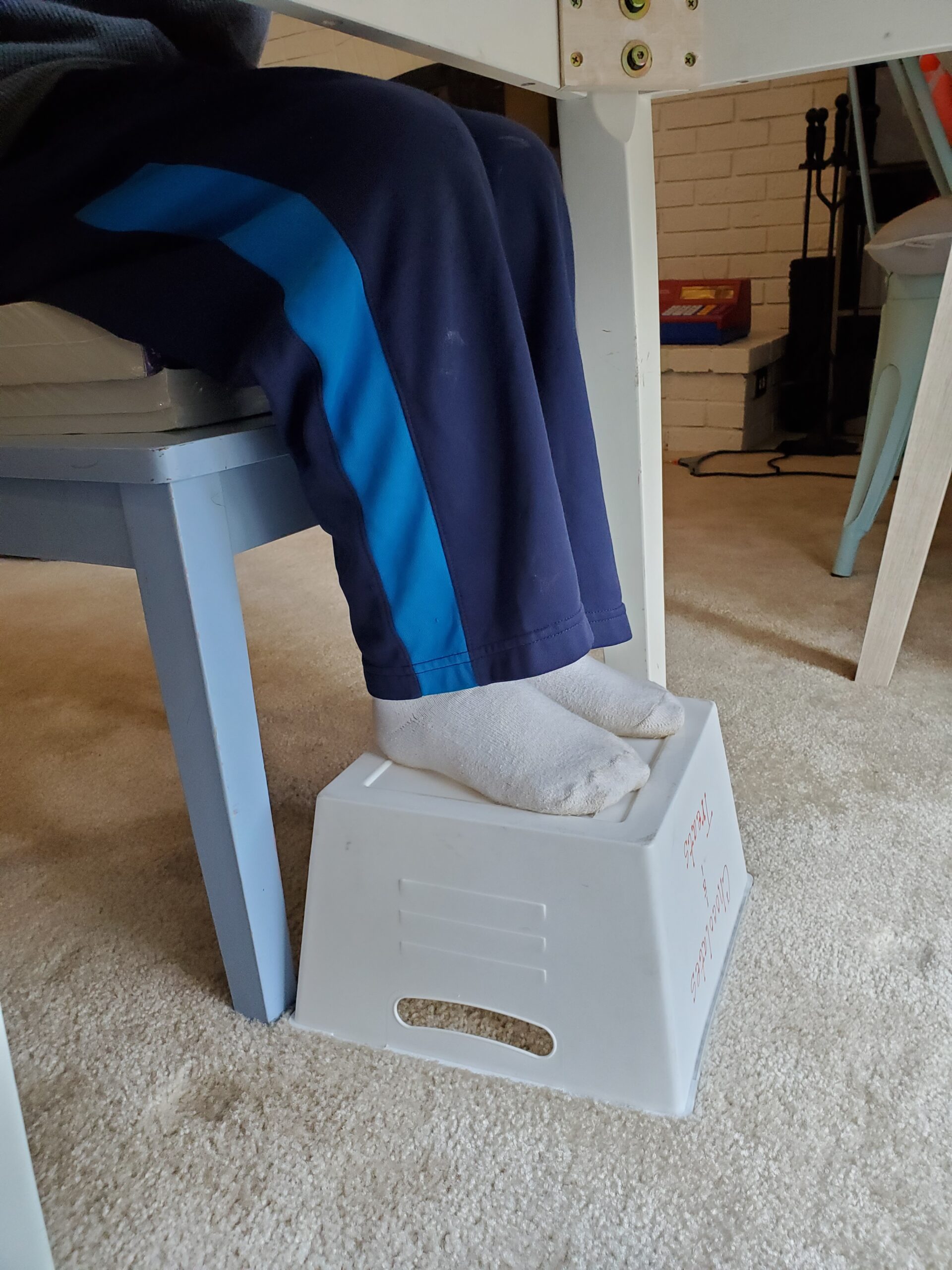

If little legs dangle from chairs, students are not able to sit still for long periods of time because blood isn’t circulating correctly. If your student has a high table and chair to use, be sure to place something under their feet for comfort.
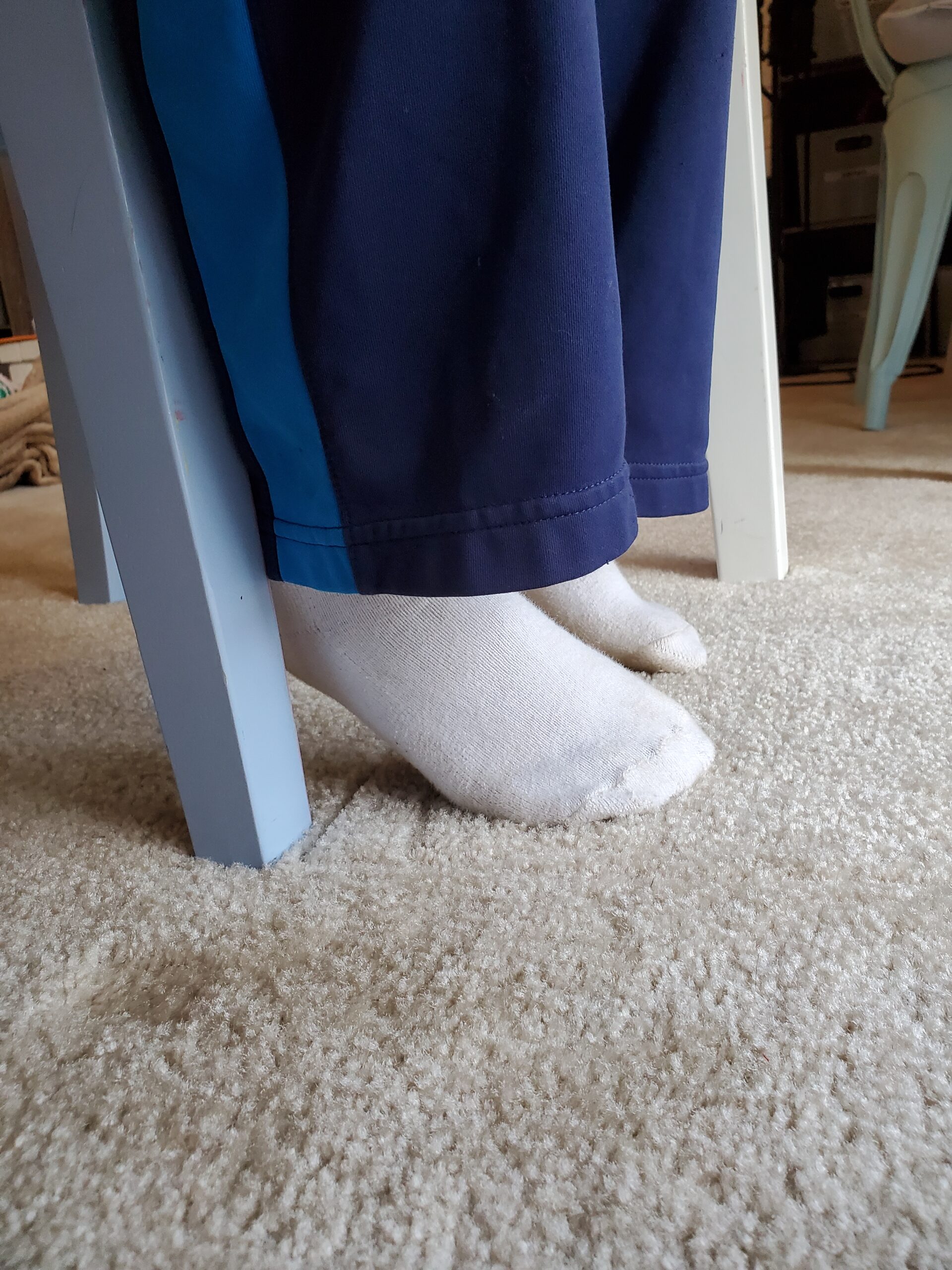

These little legs are going to get tired really fast! Books, bins, and boxes make great feet lifts.
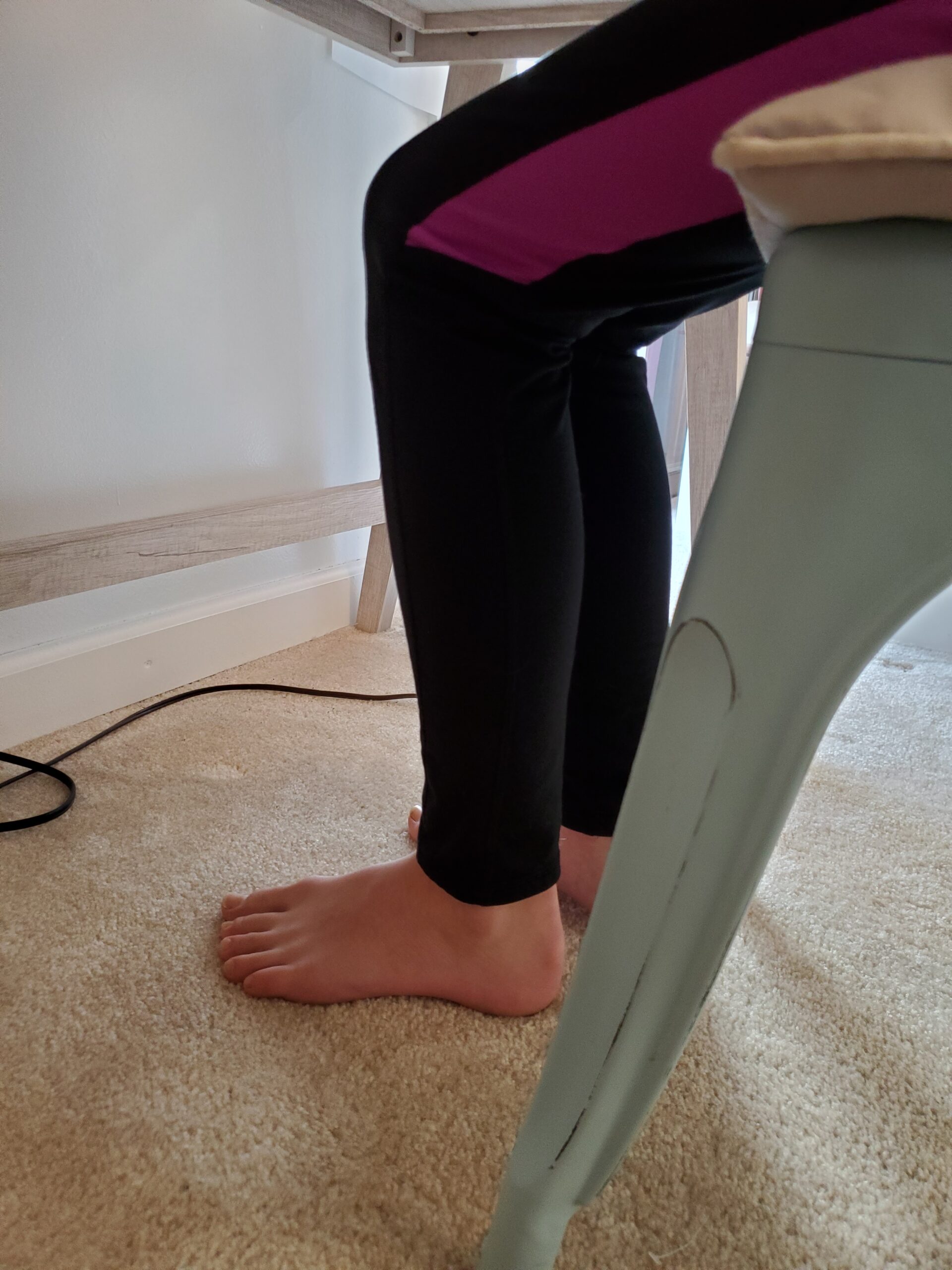

Even older students need to remember to sit correctly with their feet flat on the floor. Better writers make better readers!
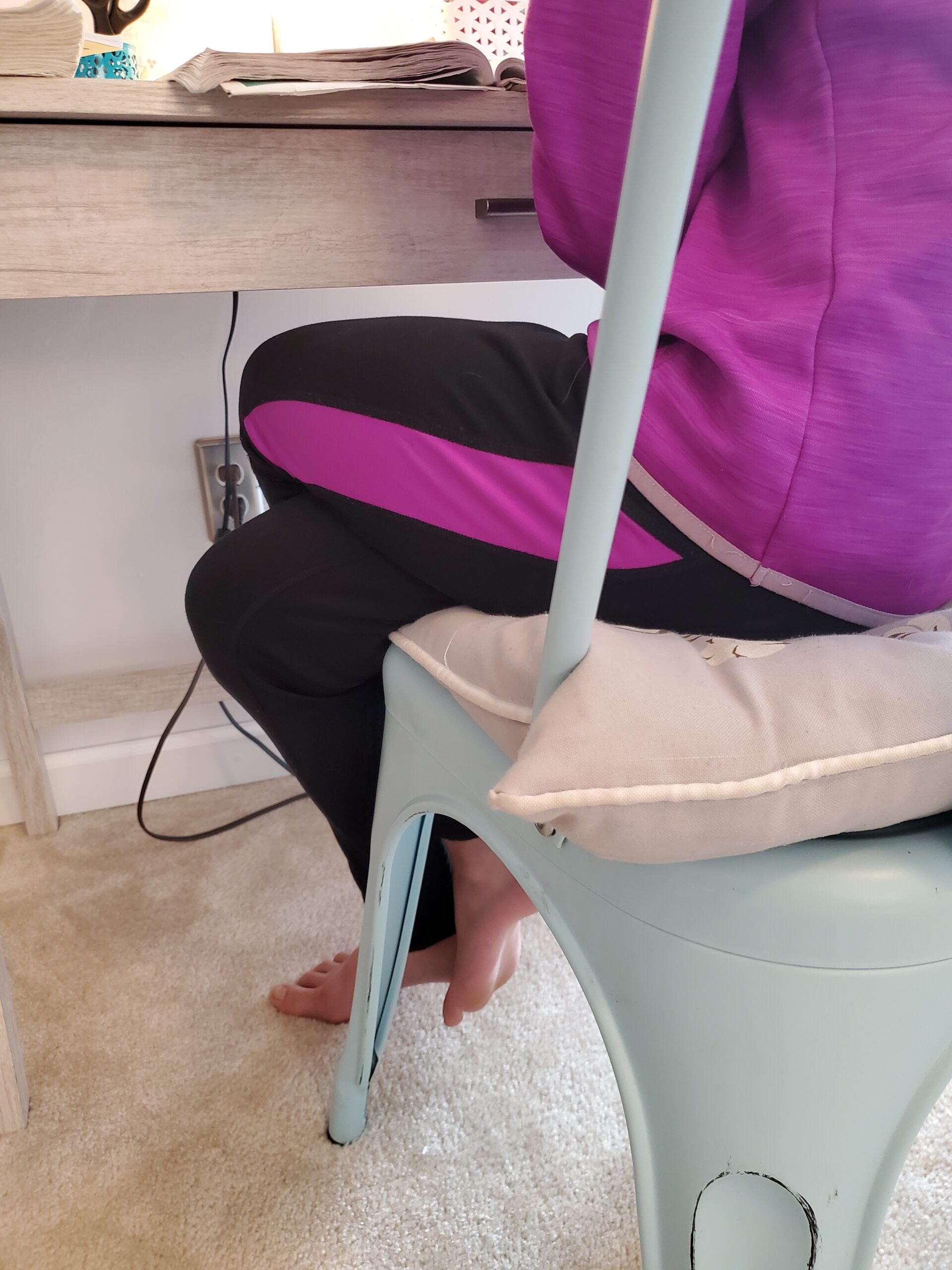

Even though it’s tempting to sit cross-legged, good handwriting begins with proper body posture. Uncrossed legs would be better for this student.
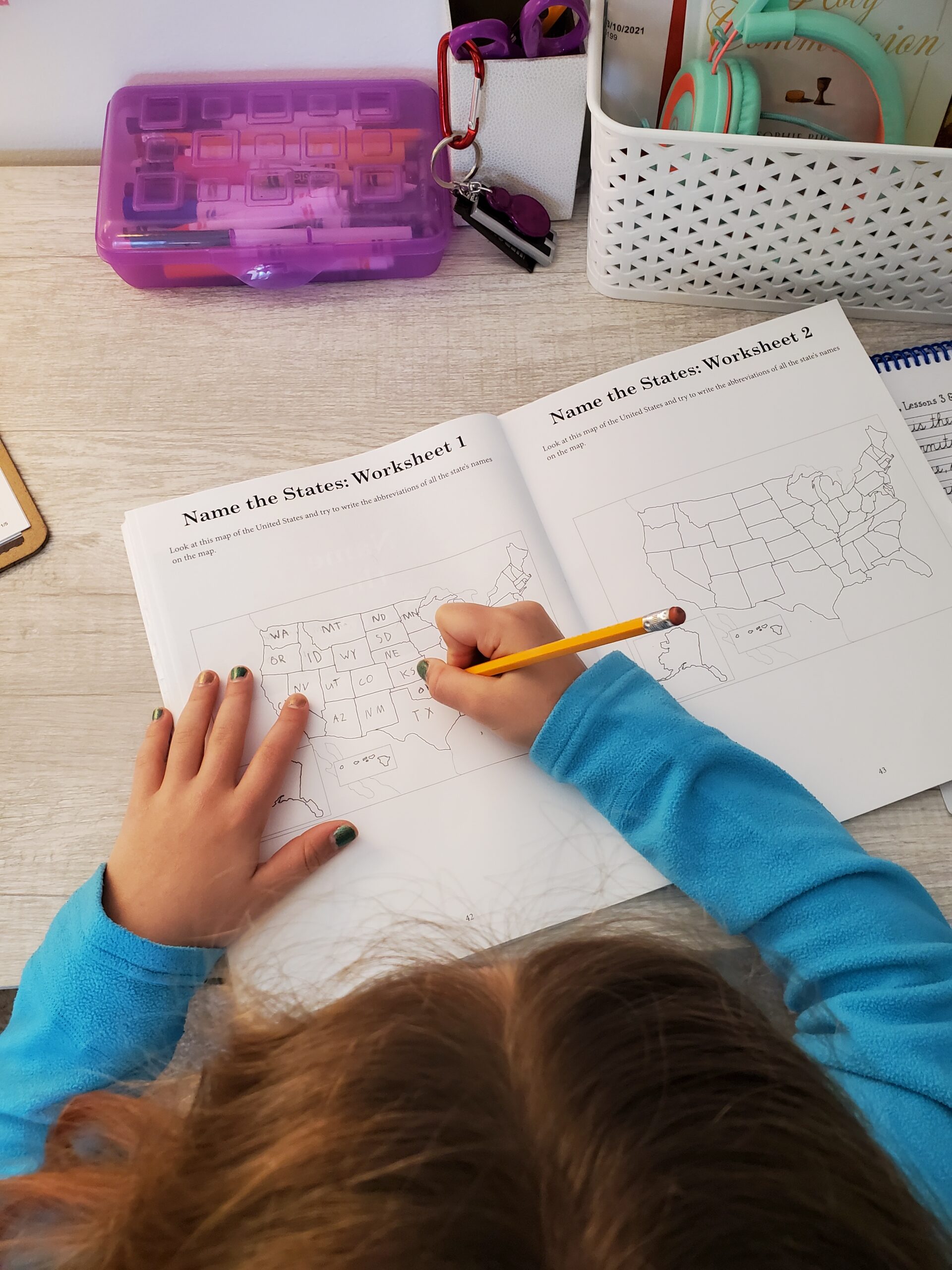

Paper positioning is also necessary for great writing. Ensure papers and notebooks are slightly slanted while your student is writing. 3/4 of their arm should be resting on the table they’re using.
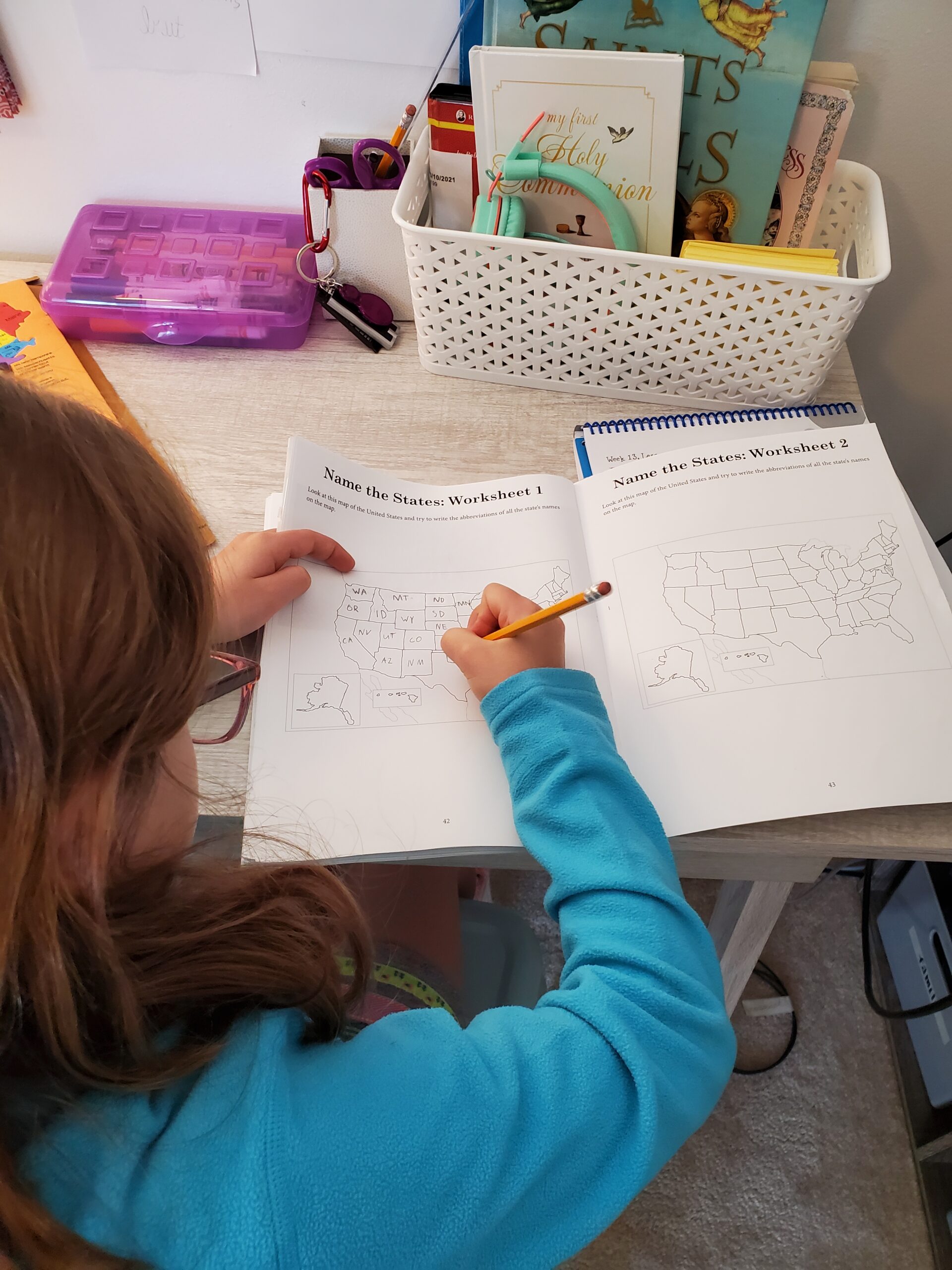

Poor positioning leads to poor handwriting, which, in turn, leads to poor spelling. Sit up tall, scoot in towards your desk, and angle that paper!


This photo shows correct pencil grip and paper positioning. The student’s helper hand is also doing it’s job by holding the paper down.
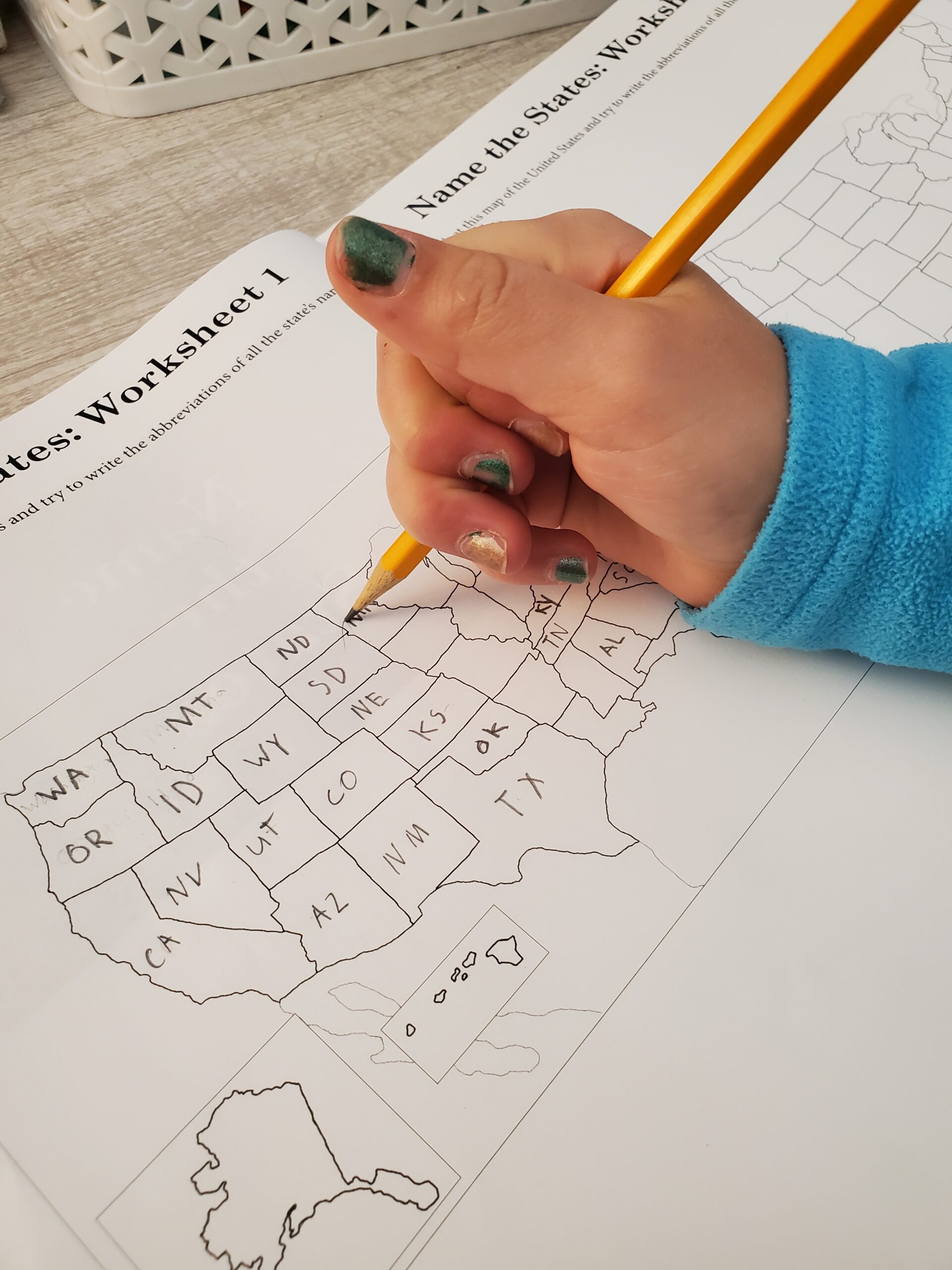

Many students end up with poor pencil grip simply because nobody told them to change it. Small adjustments when they’re little will have bigger payoffs when they’re older.
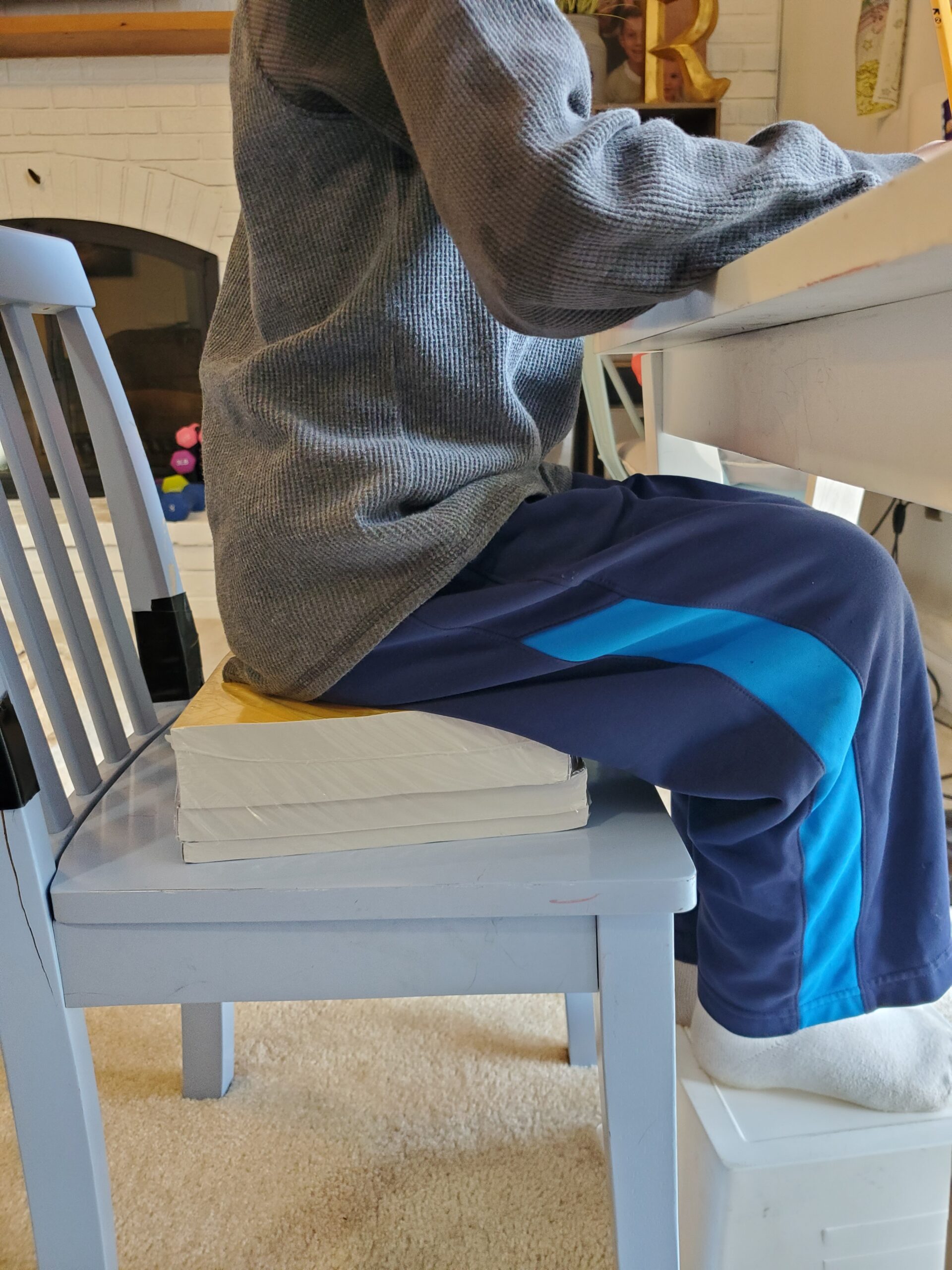

Most tables and chairs aren’t promoting proper body posture for little handwriters. Flexible seating hinders good handwriting. In order to move past this obstacle, just grab some books (like your parents probably did for you at some point!).
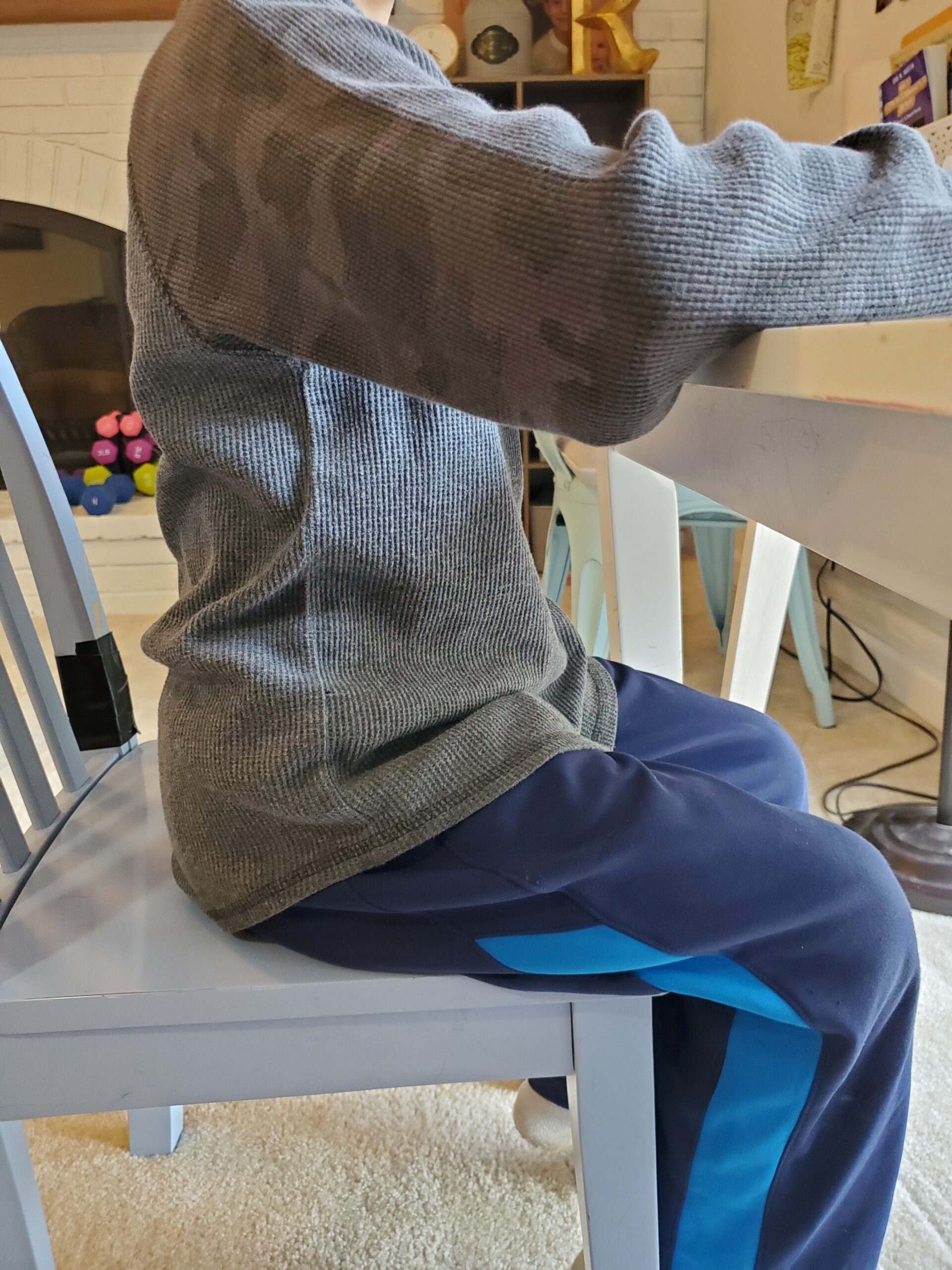

These “chicken wing” arms will get tired quickly along with his legs. This child will not be able to sit much longer than 5 minutes and will most likely get in trouble for “not sitting still”.
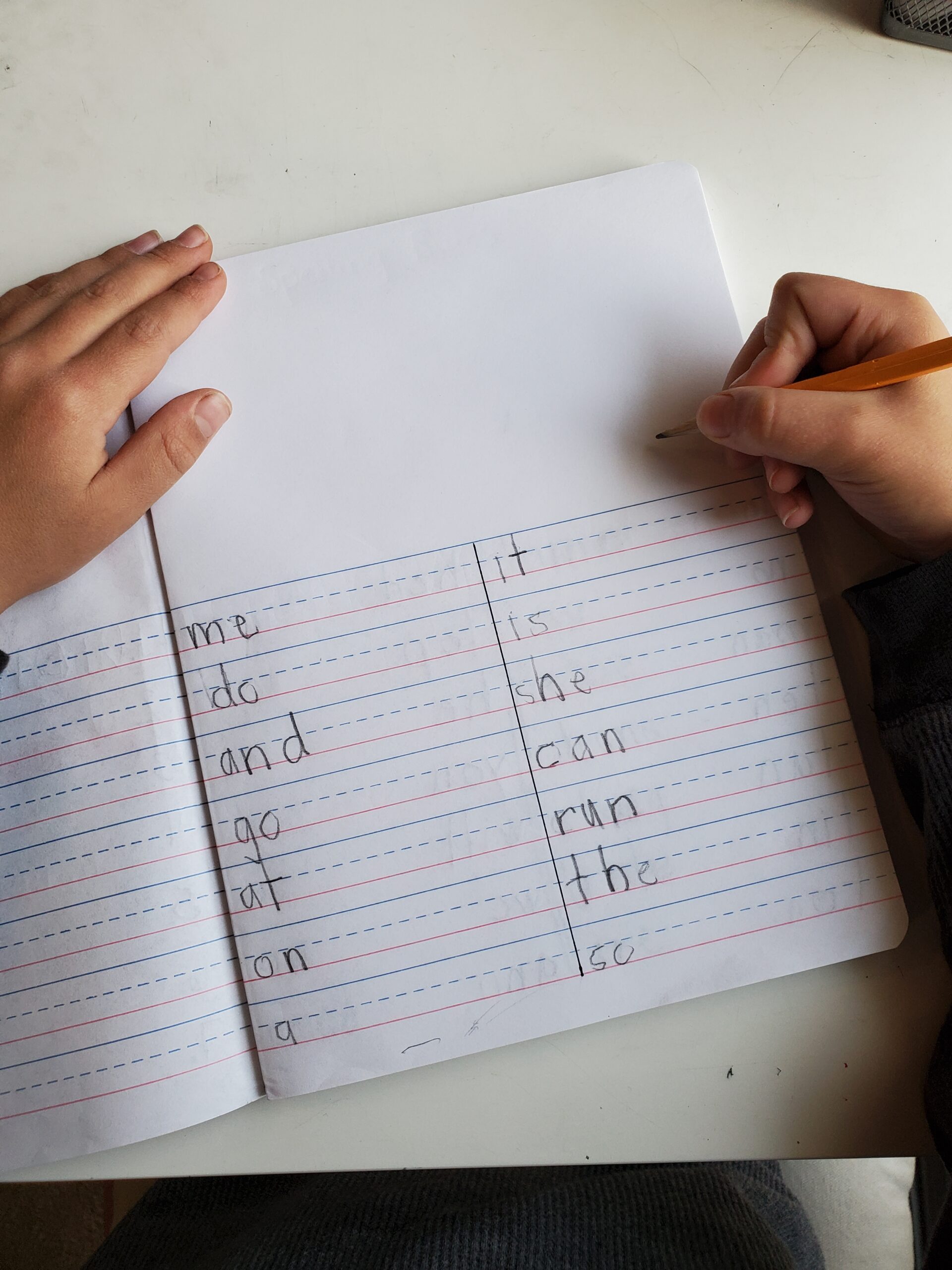

Tilted papers, stronger pencil grips, and a helper hand have all helped this Kindergartener write neatly and legibly.
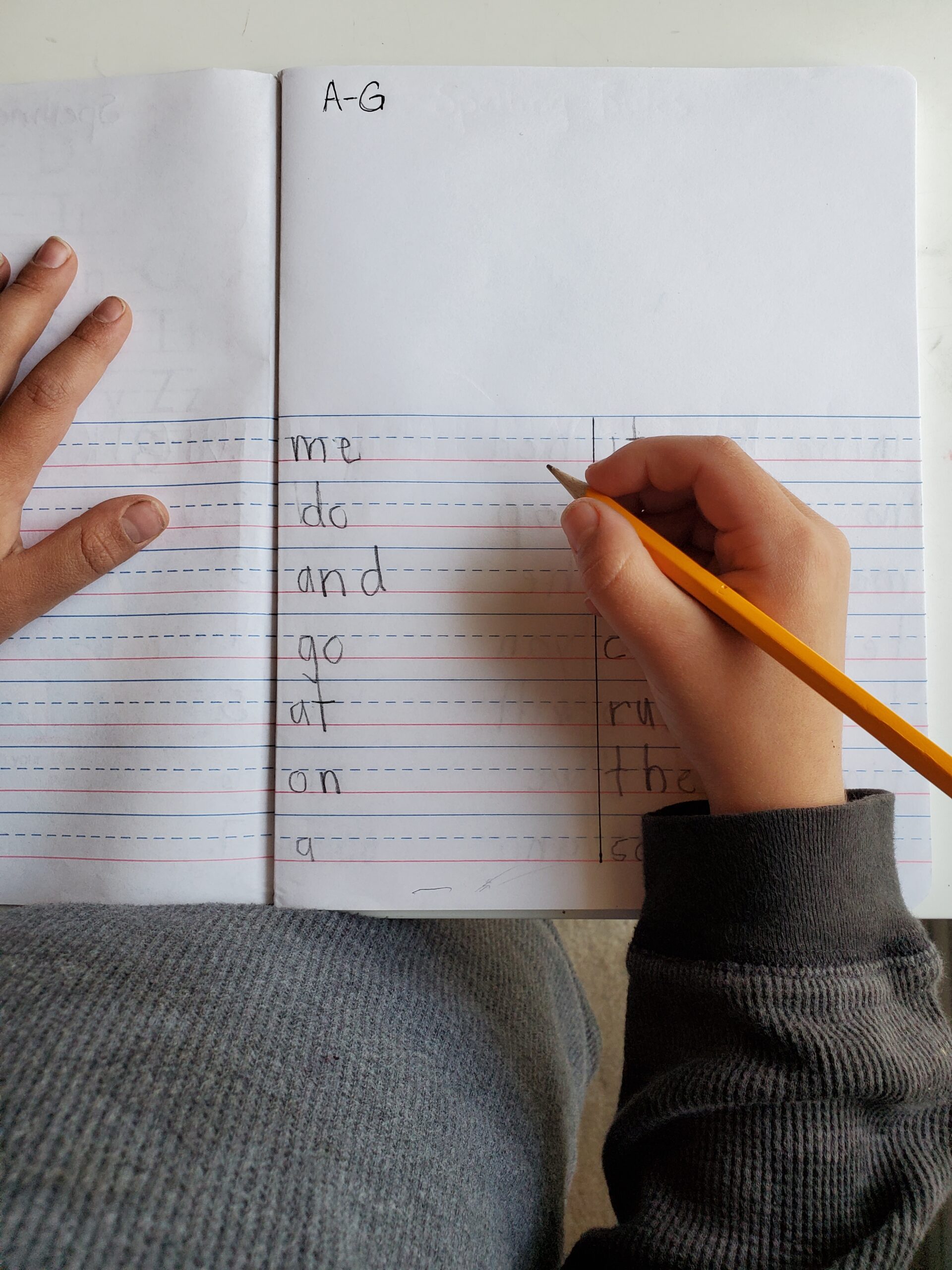

Ensure your student has his paper in the center of his body, not off to the side. If he does, his arm will be too straight and his wrist will get tired too quickly.
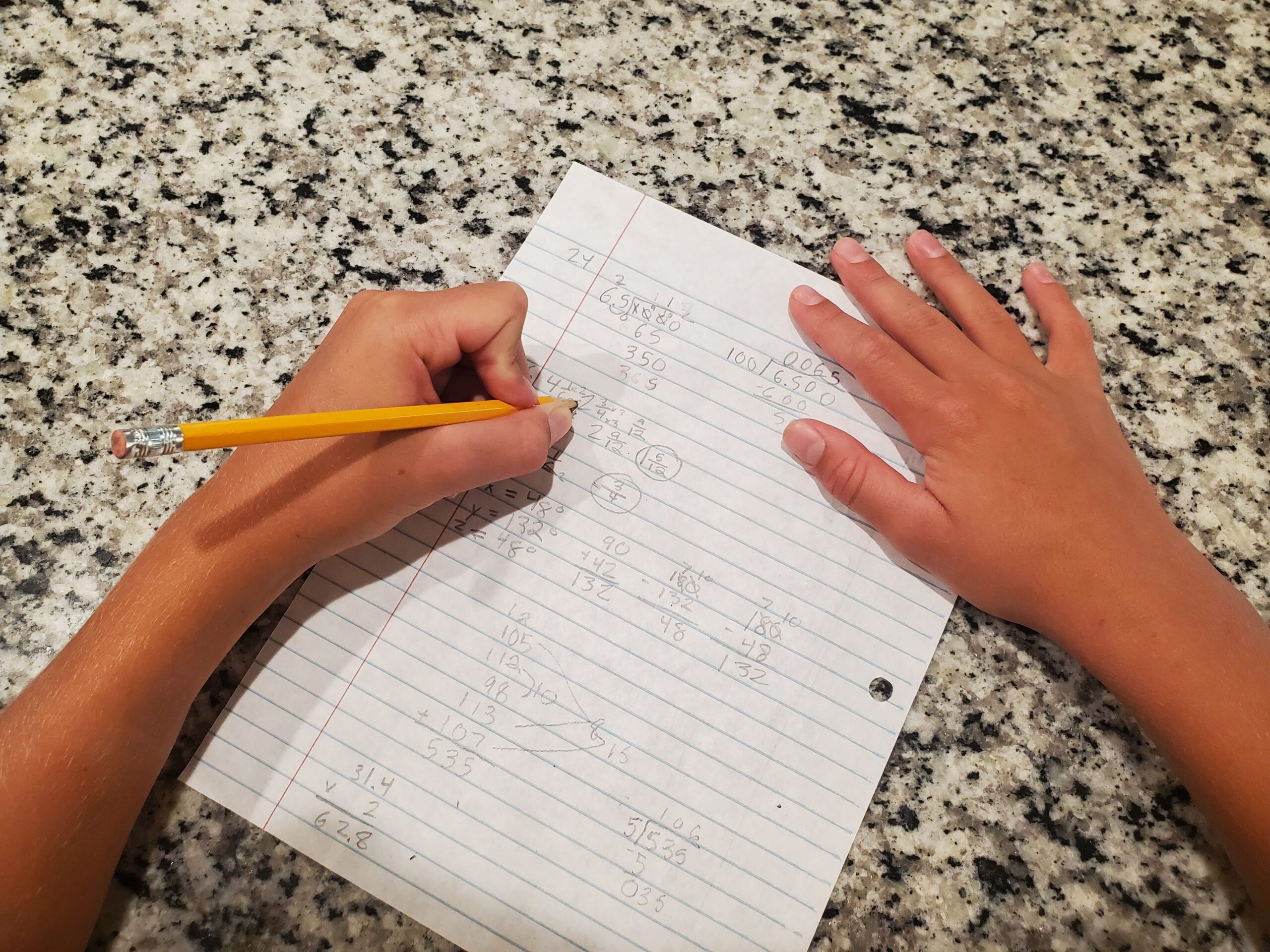

Left handed writers simply tilt their papers the other direction and write towards their body instead of away from, like right handed writers.
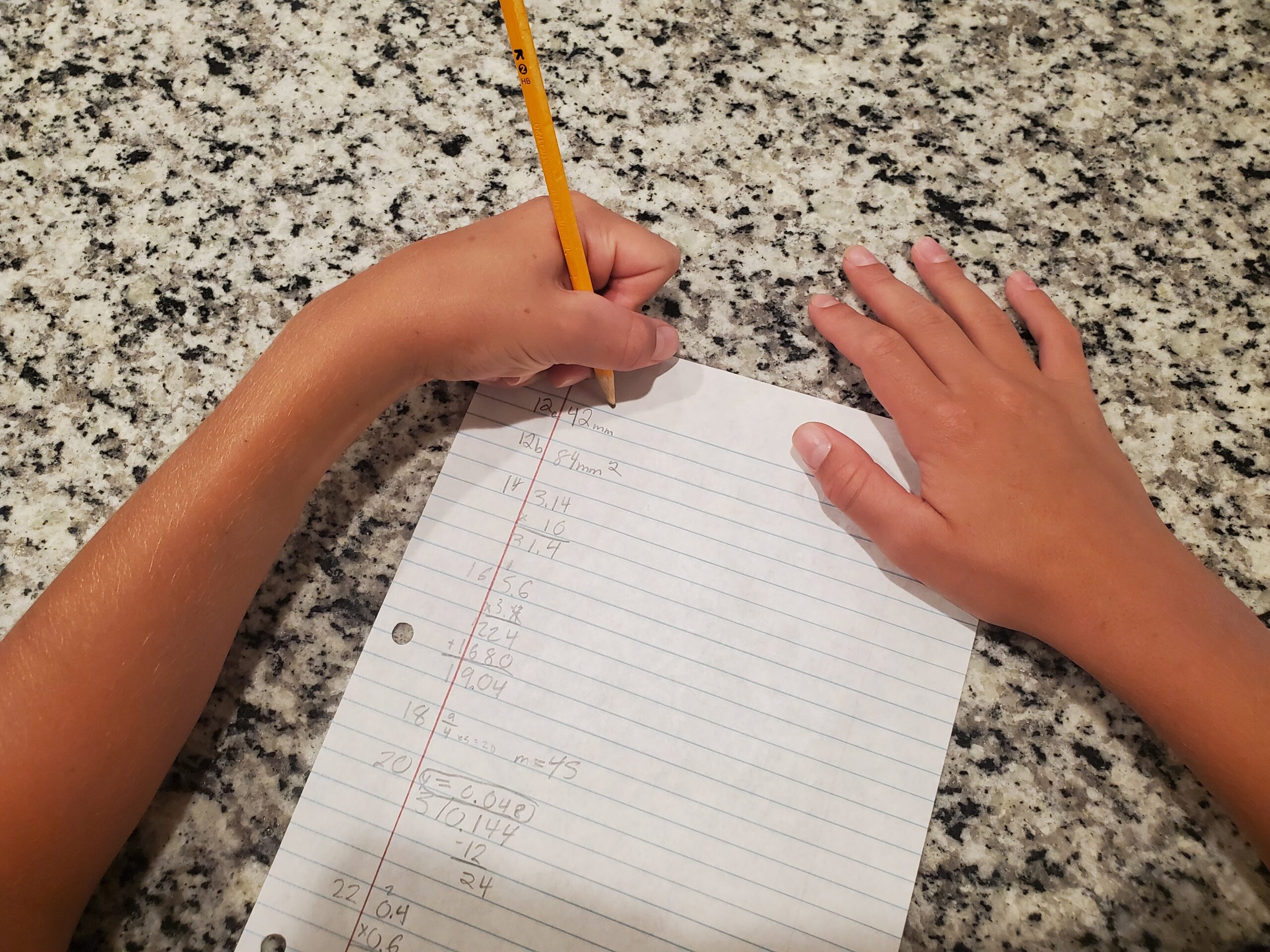

This hook-like positioning creates wrist fatigue and not a lot of pencil control. Bringing the elbow closer to the body will aid left-handed writers.
